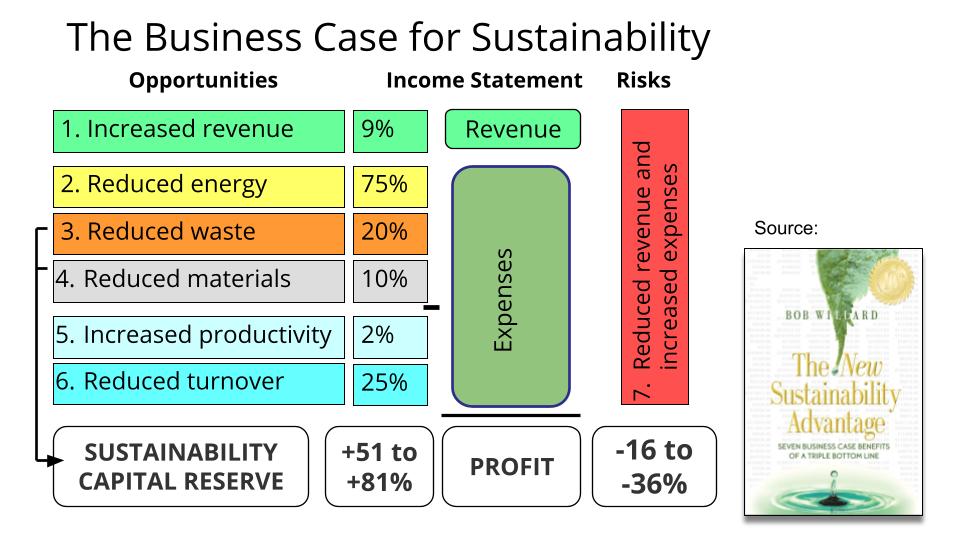“Sustainable tourism”, “going green”, “responsible tourism”.
When business owners think of these terms, they often associate them with being too time consuming, too complex or costing too much money. Consequently, many businesses and organizations miss out on the opportunity to significantly cut costs, increase revenue, and improve profitability.
The fact is, a typical business with a well-planned sustainability strategy can increase their profits by 51% to 81%.
These stats are based on years of research and experience from Canadian author and speaker Bob Willard. But while improving profits by over 50% sounds great on paper, where do these numbers actually come from and how do we make it happen?
Increase your revenue by being transparent with your customers
In tourism, increasing revenue naturally comes from attracting and serving more guests.
Over the past few years, the demand for sustainable options has grown – in business and in travel. Booking.com’s 2021 Sustainable Travel Report of 30,000 respondents from 30 countries, as well as from 3,390 accommodation providers from across 20 countries, found that:
- 83% of travellers believe sustainable travel is a vital issue
- 75% think travel companies should offer more sustainable choices
- 73% would be more likely to choose an accommodation provider if it implemented sustainability practices
- Yet, 49% of travellers believe there aren’t enough sustainable travel options available
This means customers are willing, and more likely to, spend money at businesses that align with their personal values. According to Willard’s research, most companies have the potential to increase revenue by an average of 9% by implementing sustainable practices, and then simply communicating these initiatives to their audience. The key being – you attract more guests when you share a more authentic and credible story around your sustainability practices.
Decrease your expenses by investing in sustainability
Expenses. This is where significant cost savings can be achieved, but it is also where businesses face the biggest risks if they don’t take action on sustainability.
Energy
With carbon taxes set to rise 240% by 2030, energy costs will continue to gradually increase over the coming years. However, with a sustainable strategy in place, bricks and mortar tourism businesses, such as hotels, can save up to 75% on energy costs. Similarly, tour operators could cut up to 100% of their fuel costs. This can typically be achieved by:
- Undertaking an energy or fleet assessment
- Prioritizing projects based on their payback period and return on investment (ROI)
- Developing a project budget and implementation plan
- Continuously iterating through this process
It’s no lie that implementing these energy saving initiatives can be costly upfront. However, there are a few ways that these costs can be offset or supported:
- Many utilities offer subsidized energy studies and rebates for commercial customers
- The Canadian federal government has tax incentives for large renewable energy and conservation projects
- Provincial governments offer rebates for electric vehicles and other energy conservation initiatives
- More financial institutions are offering lower rates for projects that lead to a reduced carbon footprint
- There is also GreenStep’s EcoFund program. This program was developed to help tourism businesses generate tens of thousands of dollars annually to invest back into their business through energy saving and carbon reduction projects.
The next area for sustainable savings is reduced waste at an average of 20%, followed by reduced materials and water consumption, at 10%.
Waste Reduction
A great place to start is by conducting a waste audit. To help guide businesses through this process, GreenStep has created free recycling toolkits that outline how to conduct a waste audit, and implement or improve a waste management program.
Reduced Materials
Creating a sustainable purchasing policy is a great way to help reduce material consumption within your business. In the tourism sector, single-use plastics have become a growing and complex issue. In an effort to address this problem, GreenStep launched their Single-Use Plastic Free Certification. Through this certification, businesses and organizations can assess their current policies and practices and identify areas to eliminate single-use plastics.
Water Consumption
As climate change continues to impact our natural resources, water consumption is a key area to address. Implementing initiatives to reduce your businesses water consumption can be relatively low-cost, and typically includes:
- Retrofitting shower heads, faucet aerators, spray valves, and toilets to low flow models
- Installing drip irrigation systems for landscaping and agricultural uses
Attracting The Right Talent
Labour is an area that is often overlooked as a financial benefit of implementing a sustainability strategy, yet it is an ongoing challenge for the tourism industry. Research shows that workplaces that engage employees in their sustainability initiatives experience:
- Increased employee productivity and innovation
- Reduced employee turnover
- A greater ability to attract and retain top talent.
Willard’s research shows that these benefits can save companies an average of 27% labour-related costs.
The Bottom Line
Through Willard’s research, we have learned that:
Opportunities for increased revenue
PLUS
Implementing a strategic sustainability plan that reduces expenses
EQUALS
Businesses improving profits by 51% to 81%
While the best time to plant a tree was 20 years ago, the next best time is now. Now is the time to start or accelerate your sustainability journey to become more resilient, profitable, and part of the solution!

